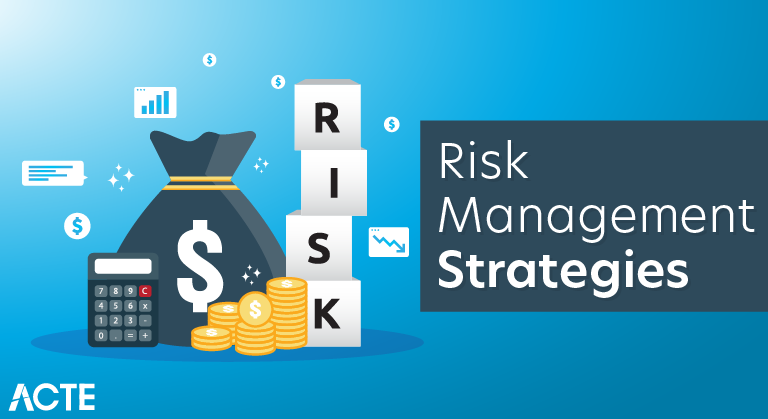Risk Management Strategies for Smart Investment Planning
Risk Management Strategies for Smart Investment Planning.

Image Source: acte.in
Risk Management Strategies for Smart Investment Planning.
Investment planning is a multifaceted process that involves various considerations, and perhaps one of the most critical aspects is effective risk management. Successful investors understand that all investments come with a degree of risk, and navigating these risks is essential for preserving and growing wealth over the long term. In this comprehensive guide, we will delve into the principles of risk management in investment planning, exploring key concepts, strategies, and best practices.
Understanding Investment Risks
1. Market Risk
Market risk, also known as systematic risk, refers to the potential for investments to be affected by overall market movements. This type of risk is influenced by factors such as economic conditions, interest rates, and geopolitical events. Understanding market risk is crucial as it can impact various asset classes, including stocks, bonds, and commodities.
2. Credit Risk
Credit risk is the risk that an issuer of a financial product, such as a bond, may default on its payments. This risk is particularly relevant for fixed-income investments, where the return is dependent on the issuer’s ability to meet its financial obligations. Credit ratings provide valuable insights into the creditworthiness of issuers.
3. Liquidity Risk
Liquidity risk is associated with the ease with which an asset can be bought or sold in the market without significantly impacting its price. Less liquid investments may carry higher liquidity risk, and in times of market stress, selling these assets may prove challenging without incurring significant losses.
4. Inflation Risk
Inflation risk is the risk that the purchasing power of money will decrease over time due to inflation. Inflation erodes the real value of money, and investments that do not outpace inflation may result in a loss of purchasing power over the long term.
5. Interest Rate Risk
Interest rate risk is relevant to fixed-income securities, such as bonds. When interest rates rise, the value of existing bonds tends to decrease, potentially leading to capital losses for bondholders. Conversely, falling interest rates can increase the value of existing bonds.
6. Currency Risk
For international investments, currency risk arises from changes in currency exchange rates. Fluctuations in exchange rates can impact the value of investments denominated in foreign currencies, adding an additional layer of risk for globally diversified portfolios.
Risk Management Strategies
1. Diversification
Diversification is a cornerstone of risk management. By spreading investments across different asset classes, sectors, and geographic regions, investors can reduce the impact of poor performance in any single investment. A well-diversified portfolio aims to achieve a balance between risk and return.
2. Asset Allocation
Asset allocation involves determining the right mix of asset classes based on individual investment goals, risk tolerance, and time horizon. Different asset classes, such as stocks, bonds, cash, and alternative investments, have varying risk-return profiles.
3. Risk Tolerance Assessment
Understanding one’s risk tolerance is a critical step in effective risk management. Investors need to assess how much volatility they can withstand without making emotionally driven decisions. This assessment informs the selection of investments aligned with individual risk preferences.
4. Periodic Rebalancing
Markets are dynamic, and asset values can change over time. Periodic rebalancing involves reviewing and adjusting the investment portfolio to maintain the desired asset allocation. This strategy ensures that the portfolio aligns with the investor’s risk tolerance and financial goals.
5. Stress Testing
Stress testing involves assessing how a portfolio would perform under various adverse scenarios. By simulating different market conditions, investors can identify potential vulnerabilities in their portfolios and make informed decisions to enhance resilience.
6. Research and Due Diligence
Thorough research and due diligence are crucial components of effective risk management. Investors should carefully evaluate investment options, considering factors such as historical performance, management quality, and the economic and regulatory environment.
Best Practices for Risk Management
1. Set Clear Goals
Setting clear investment goals is foundational to risk management. Whether the objective is wealth accumulation, retirement planning, or education funding, clearly defined goals guide the selection of appropriate investments and risk tolerance.
2. Emergency Fund
Maintaining an emergency fund in easily accessible, low-risk instruments is a risk management practice that provides a financial safety net. An emergency fund reduces the need for forced selling of investments during unexpected expenses or market downturns.
3. Stay Informed
Staying informed about financial markets, economic trends, and specific investments is crucial for effective risk management. Regularly updating knowledge allows investors to make informed decisions based on current market conditions.
4. Professional Advice
Consider seeking advice from financial professionals, especially when facing complex financial decisions or uncertainties. Financial advisors can provide personalized insights and recommendations based on individual circumstances.
5. Monitor and Adjust
Regularly monitoring the performance of the investment portfolio, market conditions, and personal financial situations is essential. Adjusting the investment strategy as needed ensures that the portfolio remains aligned with the investor’s goals and risk tolerance.
6. Stay Disciplined
Discipline is a key attribute in effective risk management. Avoiding impulsive decisions based on short-term market fluctuations and sticking to a well-thought-out, long-term investment plan contributes to successful risk management.
Conclusion
In conclusion, risk management is integral to the success of any investment plan. By understanding various types of risks, employing effective risk management strategies, and adhering to best practices, investors can navigate the complexities of financial markets with confidence. While risk cannot be eliminated entirely, a well-considered plan and adherence to fundamental principles can help investors strive to achieve their financial objectives while managing potential downsides.
Individual circumstances vary, and seeking professional advice tailored to specific situations is a prudent step in the investment journey. With a proactive and informed approach to risk management, investors can enhance their ability to make sound financial decisions, regardless of market conditions.
Risk Management Strategies for Smart Investment Planning.
Investing with Confidence: How Safe Are Mutual Funds in 2024.
Author: Harendra Kukna

Leave a comment